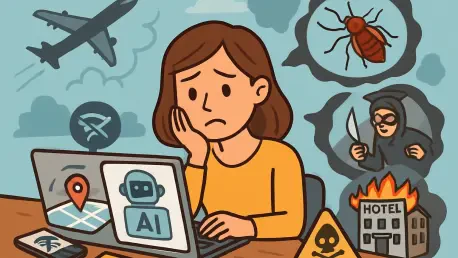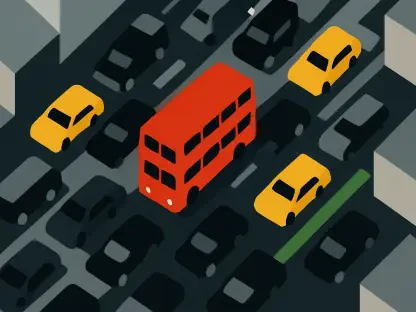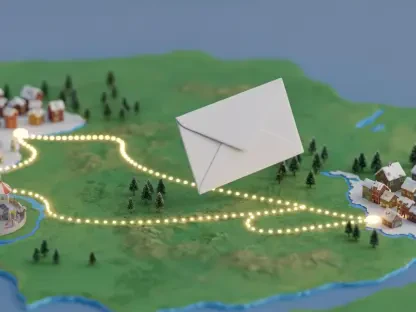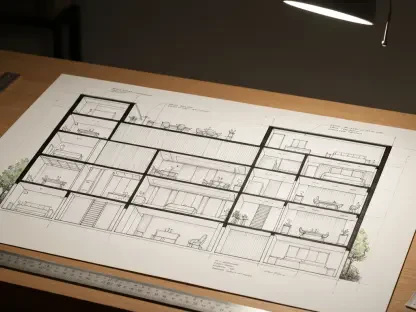As we dive into the evolving world of travel technology, I’m thrilled to sit down with Katarina Railko, a seasoned expert in hospitality with deep roots in the travel and tourism industry. With her extensive experience and passion for events and conferences, Katarina has witnessed firsthand the transformative impact of artificial intelligence on trip planning. Today, we’ll explore the promises and pitfalls of AI tools in travel, from the surprising ways they shape itineraries to the very real dangers of misplaced trust in digital advice. Our conversation touches on unforgettable stories of misled travelers, the risks of AI-generated misinformation, and the future of balancing technology with human judgment in crafting meaningful journeys.
How did you first notice travelers turning to AI tools for planning their trips?
I remember being at a travel expo a couple of years ago when I overheard a group of young backpackers excitedly discussing their itinerary, which they’d pieced together using an AI chatbot. They were thrilled about how quickly it suggested off-the-beaten-path destinations. It struck me then how fast this technology was catching on. I started asking around, and soon realized it wasn’t just a niche trend—people from all walks of life were using these tools for everything from budget planning to finding hidden gems. It was eye-opening, but I couldn’t help but wonder about the reliability of the advice they were getting.
Can you share your thoughts on the incident involving tourists in Peru searching for the ‘Sacred Canyon of Humantay,’ a place that doesn’t even exist?
That story really hit home for me. When I heard about these travelers confidently heading to a nonexistent destination based on a beautifully written AI description, I felt a mix of frustration and concern. It’s heartbreaking to think they spent money and energy on a wild goose chase. The Andes are no place to be wandering aimlessly—high altitudes, unpredictable weather, and spotty cell service can turn a small mistake into a life-threatening situation. It’s a stark reminder that AI can sound convincing even when it’s completely wrong.
What are some of the specific dangers of relying on AI for travel planning in remote or rugged areas like the Andes?
Remote areas like the Andes are incredibly unforgiving. AI might not account for real-world challenges like sudden weather shifts, lack of oxygen at high elevations, or the absence of phone signal to call for help. I’ve heard of travelers following AI-generated routes that ignore these factors, ending up stranded or lost. The technology often lacks the contextual understanding that a local guide or experienced planner would have, and in places where every decision counts, that gap can be dangerous. It’s not just about inconvenience—it’s about safety.
Why do you think AI tools sometimes invent places or provide incorrect information?
From what I’ve seen, AI often prioritizes sounding plausible over being accurate. It’s trained on vast amounts of data, pulling together words and phrases that seem to fit, but it doesn’t truly ‘know’ the world. It might mash up names or descriptions—like creating a fictional canyon in Peru—because those terms statistically align with the region. The problem is, it presents these guesses with the same confidence as factual info. Most travelers don’t realize they’re getting a patchwork of possibilities rather than hard truth, and that’s where the trouble starts.
Have you come across other stories where AI has led travelers astray, similar to the couple stuck on Mount Misen in Japan?
Oh, absolutely. That Mount Misen story resonates with other cases I’ve encountered. I’ve heard of travelers using AI for schedules—like departure times for cable cars or ferries—only to find out the information was outdated or flat-out wrong. In that Japan case, the couple was stuck at the summit because the AI misreported the last ropeway time. It’s often a mix of outdated data and the AI’s inability to verify real-time conditions. Travelers usually end up frustrated, sometimes having to scramble for last-minute solutions or wait out the night in unsafe conditions. It’s a tough lesson to learn the hard way.
What’s your reaction to surveys showing that over a third of AI users receive false or incomplete travel information?
I’m not surprised at all. That statistic lines up with the feedback I’ve gotten from travelers at conferences and events. Many have shared stories of AI suggesting impossible itineraries or missing crucial details, like visa requirements or local customs. Despite this, I think people will keep using AI because of its convenience and the allure of quick answers. The challenge is getting them to see it as a starting point, not a final plan. Awareness is growing, but the temptation to trust technology fully is still strong.
How do you see AI-generated content, like misleading videos on social media, affecting travelers’ perceptions of destinations?
It’s a growing problem. I’ve seen how fake videos or images—say, a stunning cable car in a place it doesn’t exist—can lure travelers into booking trips based on pure fantasy. It distorts reality and sets up false expectations, which can lead to disappointment or worse, risky decisions. Beyond that, it erodes the authentic cultural connections travel should foster. When AI blurs the line between what’s real and what’s fabricated, it chips away at the trust and wonder that make exploring new places so special.
What advice do you have for our readers who are considering using AI tools for their next adventure?
My biggest piece of advice is to treat AI as a brainstorm buddy, not a travel agent. Use it for ideas, but verify everything—cross-check destinations, schedules, and reviews with reliable sources like official tourism websites or local contacts. Be specific in your prompts to minimize vague or made-up answers, and always have a backup plan. Most importantly, stay adaptable. If something feels off or too good to be true, trust your gut and dig deeper. Technology can enhance travel, but it’s your judgment that keeps the journey safe and meaningful.









